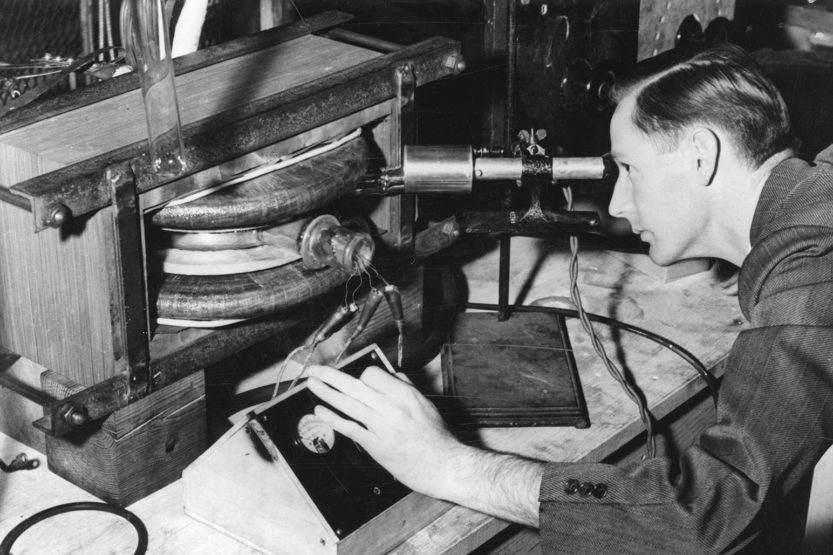Ingenious: Atom smasher
 Illinois professor Donald Kerst created the betatron particle accelerator in 1940. (Image courtesy of UI Archives)
Illinois professor Donald Kerst created the betatron particle accelerator in 1940. (Image courtesy of UI Archives) When Illinois Physics Professor Donald Kerst invented his revolutionary atom smasher in 1940, he found naming his device to be a project in itself. After a year with no luck, Kerst put out a call for ideas.
Some suggested “rheotron” and “Illinitron,” while others recommended more exotic names, such as “super X-ray machine” and “cosmic ray machine.” The most audacious idea came from a German colleague: “Ausserordentlichhochgeschwindigkeitelektronenentwickeln-denschwerarbeitsbeigollitron.”
Kerst eventually settled on “betatron”: the Greek letter “beta” represents the symbol for an electron, and “tron” means “an instrument for.” The betatron, a type of particle accelerator, sent electrons flying at astounding speeds in a circular path.
In 1932, the University of California, Berkeley, developed a particle accelerator called the cyclotron; UI created one four years later. The betatron was different because it produced high-speed electrons that generated X-rays.
“Kerst built his first betatron in the face of failure by others who had tried for years to build a machine that could produce high-energy electrons by means of a magnetic field,” wrote The Daily Illini in October 1960. The betatron was even featured in a four-page spread in Life magazine in March 1950.
While the first betatron produced 2.5 million volts of energy, later versions developed by Kerst generated as much as 300 million volts.
Eventually, the betatron was replaced as a particle accelerator, but “several versions of the machine were used therapeutically to accelerate electrons in cancerous tumors,” The New York Times wrote.
Kerst’s betatron was donated to the Smithsonian Institution in 1960.
Sources: The New York Times, Aug. 20, 1993; Donald William Kerst, 1911-1993, National Academy of Sciences; Accelerators for Society; The Daily Illini, Nov. 11, 1945, Nov. 17, 1945, and Oct. 20, 1960; and the University of Illinois Archives.

